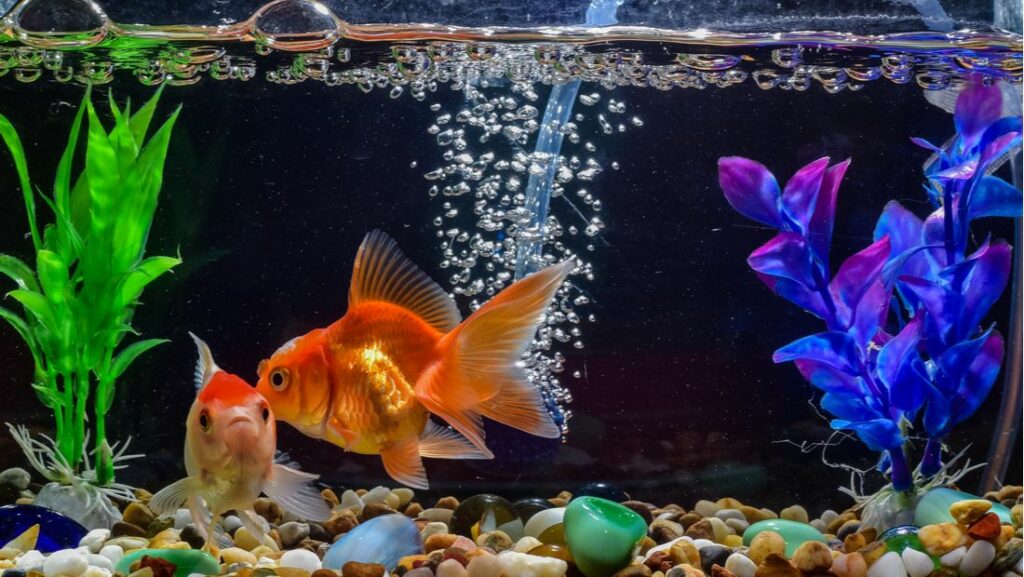How to Easily Clean Your Aquarium
In addition to looking fantastic, a clean aquarium is better for your fish’s well-being. Your tank’s appearance and health might be negatively affected by the long-term accumulation of nitrates and other metabolic waste products.
Most aquariums owners buy filtration to help keep the water clean, but even the most outstanding models on the market aren’t enough to keep your aquarium entirely solid and hygienic. This is why we’ve put together a comprehensive guide on maintaining your fish tank.

Image source here
How Often Should You Clean It?
Water changes should be done weekly for most ordinary tanks, but larger tanks may not need to be changed as frequently. This is because larger tanks are more likely to have a lot of fish in them.
As a result, you should flush out about a third of the tank’s water using a disinfectant solution. Use a scrape to remove any ornamental objects that the tanning process has left behind.
Remove Any Adornments And Bubblers From The Tank
Your hands should be free of soap residue. The fish should not be bathed with soap. Turn off and disconnect any electrical equipment since this might be hazardous to your well-being. Remove any plants, decorations, bubblers, or purifiers from your tank before you start cleaning it. In the tank, there should be nothing but stones left. As a result, the following step should be a lot less complicated.
Save Some Tank Water By Scooping It Out
Approximately half of the treated water should be scooped out with a big container. Be sure to keep the water separate from the rest of the ingredients, and do not pour any other ingredients into it.
For your fish to thrive, they require a certain amount of bacteria, and recycling tank water improves microbe levels. At least half the water has been preserved, so pour the remaining water into the basin with caution. Pebbles can clog your drains if they get into the drainage, so keep them out of the sink. Try putting your hand on the vent to keep stones from flowing through.
Refill The Tank With Water
Refill the tank with the previously removed water and store it in the big bucket or vessel you just used. Afterward, add the dechlorinated water to the tank. Ensure that the water from the little tank containing the fish has enough room to fit.
After you’ve spilled all of the water, apply a small amount of water supply dechlorinator. Adding a dechlorinator to the water or using UV light sterilization is necessary because tap water was utilized throughout the cleaning process.
Once the water has been cleaned, a water softener is applied. When adding water, filtration, bubbler, and ornamental elements should be returned to the tank. Wait 20-70 minutes for the temperature to regulate before turning on all gadgets. If the water temperature is not close to what it was previously, it might lead to severe problems. Consequently, do not transfer any water that has been chilled to the tank.
Clear Out The Aquarium’s Decorative Objects
Paper towels are used to clean the inside of the tank, and the sides are wiped clean as well. This will get rid of any algae that may be on the glass. In addition, towels can be used to moisten the aquarium if it’s too dried. When cleaning, do not use any detergents or chemicals.
Tap water is better for cleaning fish tanks because soaps can harm the fish. When the paper towels become soiled, make sure to use clean ones. Until no more algae are visible, the job is done.
Add tap water to the tank to wash the rocks. Moving the tank from the front, too, after adding an inch of water, can help circulate it. The tank should be advanced enough to remove debris, but not so much that water is splashed. Remove the water as soon as you see any dirt in it. Repeat these processes until the stream can no longer collect any material from the ground.
This is a simple method for removing stones from the water. You can remove the rocks and rinse them individually for a more thorough cleaning. Drain all the water from the rocks after the washing process is complete. Make sure that no stones drop into your sink.
Decorative elements may be cleaned by scrubbing them clean with a toothbrush. The brush will be covered in algae as a result of this process, so make sure that you wipe the toothbrush with tap water when it becomes too soiled and resume washing. When there are no more algae, the
cleaning is complete.
Keeping your aquarium clean doesn’t have to be a time-consuming process; it all comes down to frequent and consistent upkeep. To keep your fish healthy and happy, partial water modifications are necessary. As a result of making partial water adjustments, your aquarium’s vital bacteria populations will not be injured or destroyed. Follow our simple instructions, and you’ll have no problem.